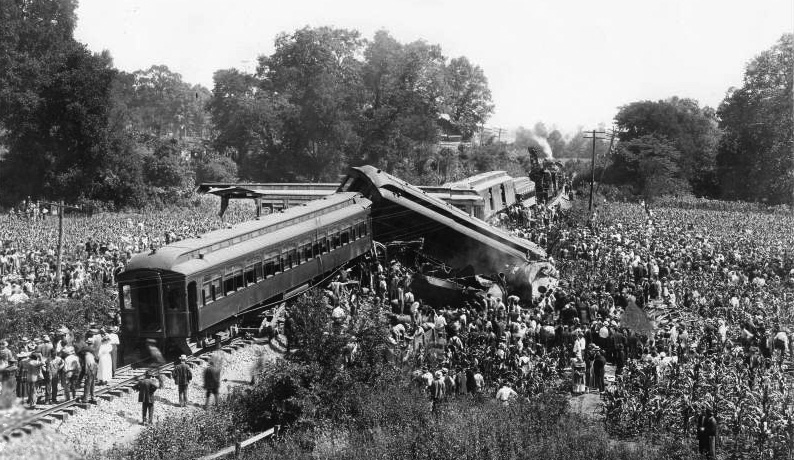One of Nashville’s biggest disasters was an enormous fire that broke out in East Nashville on March 22, 1916. As we approach the 100-year anniversary of that event, we look back on five defining disasters that have occurred in the past century and have each, in their own unique way, shaped the city that we have today (and yes, we realize there are others, but we wanted to focus on just five for today’s article!)
One hundred years ago this month, on March 22, 1916, a fire broke out in what was, at the time, the wealthiest area of Nashville, the Edgefield neighborhood located in East Nashville. The fire, aided by 50 mph winds, burned a two mile-by-two-block section of this neighborhood and either damaged or destroyed 648 buildings in less than five hours. Notable buildings destroyed included the Edgefield Baptist Church, Woodland Street Presbyterian Church, St. Columbia’s Church and School, Warner School and Little Sisters of the Poor. Some 3,000 Nashville residents were immediately homeless.
Thirty-five blocks were devastated in Nashville on March 22, 1916. The fire was contained after four-and-a-half hours.
The fire was started by a boy playing with a ball of yarn. The yarn caught fire and he threw it into a vacant lot just before noon. The dry grass caught fire, and 35 city blocks were destroyed before the fire could be put out, which didn’t happen until around 4:30 p.m. that same day. The Nashville Fire Chief telegraphed every city within hundreds of miles pleading for men and fire engines to help out. The neighbors formed water bucket lines to help stop the fire, and the National Guard was even called upon to help with the fire, relief efforts and to help prevent looting. Property damage exceeded $1.5 million.
Today, homes on Russell, Fatherland, Woodland and surrounding streets represent what once made up the much larger neighborhood of Edgefield, now called Historic Edgefield.
The worst train wreck in United States history occurred on the tracks behind the present-day Saint Thomas West, near White Bridge Road. Anyone who walks the Richland Creek Greenway can read the historical marker that narrates the day when two passenger trains, operated by the Nashville, Chattanooga and St. Louis Railway, collided head-on at Dutchman’s Curve, going 50 mph. One-hundred-one lives were lost and an additional 171 people were injured. An investigation into the crash pointed to the wooden cars adding to the casualties, and that steel cars were a safer option. This accelerated the switch from wooden cars to steel cars across America.
The walk on the Richland Creek Greenway is beautiful, but don’t miss out on the history! At the end of the bridge over the creek, nearest to McCabe Golf Course, is this historical marker. Go read it there and soak in the history. According to this marker, the crash was heard from miles around and more than 50,000 people came to see the wreckage.
David Allan Coe sang “The Great Nashville Railroad Disaster (A True Story)” on his 1980 album, “I’ve Got Something to Say.” The song was written by Bobby Braddock and Rafe VanHoy and told the story of this disaster. You can see a video with the lyrics written out here (it does a good job telling the story of this wreck): (continue reading)
